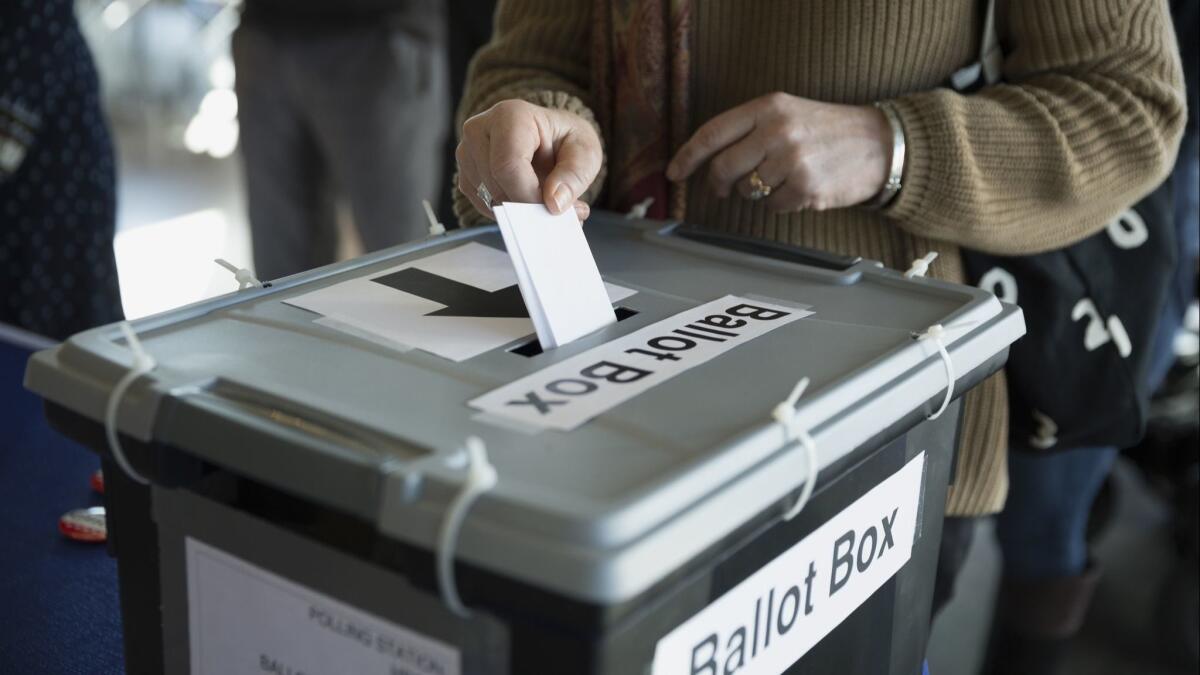How the Berkeley IGS poll is done

Reporting from Washington — The UC Berkeley Institute of Governmental Studies poll that The Times is publishing uses a method that differs from traditional phone-based surveys. Here’s how it works.
Like many surveys, the Berkeley IGS poll, directed by veteran pollster Mark DiCamillo, starts with the information the state makes public about each registered voter, known as the voter file.
The voter file doesn’t show how anyone voted. In most states, it includes a telephone number. That’s where pollsters most often get the numbers they call for surveys.
In California and some other states, the voter file can include an email address. About one-third of voters in the state have supplied an email.
The Berkeley IGS poll uses those publicly available email addresses to send a message to a random sample of voters asking whether they would be willing to take a survey about the election. Those who respond to that query or to follow-up emails get a survey they can complete online.
This approach has several advantages
Doing the poll this way provides a random sample of voters, unlike many online surveys that use a non-random sample and then must adjust it to match a voter model.
Using email and an online survey lowers costs considerably compared with telephone surveys, which need live interviewers.
And because the sample is drawn from official state and county records, we know that everyone surveyed is registered to vote and which district they’re registered in. We also know the voter’s party registration, age, gender and, in many cases, race and ethnicity. All that information can be used when the pollsters weight the sample to match the demographics of the voting population.
The file also provides accurate information about how often each voter has participated in past elections. That’s helpful in identifying which registered voters are most likely to vote.
Finally, this method allows the poll to easily query people in languages other than English and to show respondents visual displays, such as the text of ballot language for an initiative.
For this poll, respondents were offered the survey in English or Spanish.
What’s the track record?
The Times worked with Berkeley to poll eight tightly contested congressional races in California in 2018. The results were highly accurate. So were several other polls that Berkeley has conducted using this technique.
What are the drawbacks?
The biggest potential problem is that not all voters include an email address in their voter file, and some groups of voters are underrepresented among those who do.
Certain groups — Latino voters, for example — are less likely to have an email address in the voter file. (This is also a challenge faced by telephone surveys that use the voter file, since not everyone has a working number on file, but the problem is bigger with email.)
To avoid under-representing some groups, which could make the poll inaccurate, the survey uses a technique called stratification. That means Berkeley sends emails to a larger share of people who are part of underrepresented groups. Stratification adds some complication to the polling, but it results in a more representative sample. Telephone surveys also often stratify their samples to ensure they get adequate representation of hard-to-reach groups.
Once the survey results come in, the poll takes an additional step to ensure that the sample accurately represents the population at large, weighting the data to reflect known demographics, including age, race and ethnicity, gender and party registration.
Finally, the poll selects those voters deemed likely to actually cast ballots. For this survey, that’s based on their voting history and their stated intention to vote.
More details on the polling methodology, the full text of the questions asked and data tables can be found at the Berkeley IGS website.
More to Read
Get the L.A. Times Politics newsletter
Deeply reported insights into legislation, politics and policy from Sacramento, Washington and beyond. In your inbox three times per week.
You may occasionally receive promotional content from the Los Angeles Times.











